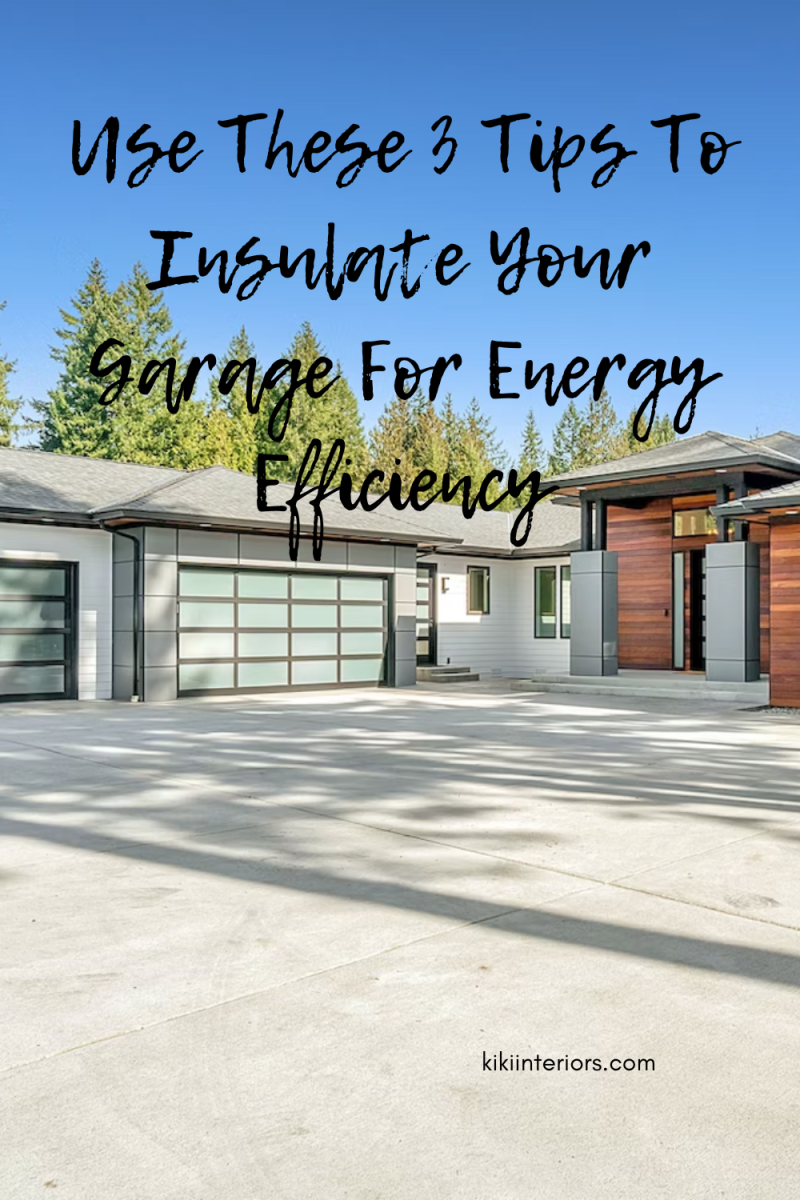Use These 3 Tips To Insulate Your Garage For Energy Efficiency

Are you tired of stepping into a freezing garage during winter or sweltering in the summer heat while trying to complete your latest DIY project? Did you know that insulating your garage could not only improve your comfort but also save you money on energy bills? It’s time to transform your garage into a cozy and energy-efficient space with these four effective insulation methods.
Not only will you enjoy a more pleasant environment when you insulate your garage, but you’ll also notice significant savings on your energy bills. With a few tips you can say goodbye to temperature extremes and hello to a garage that works for you. In this article, we will reveal several ways that you can iunsulate your garage for energy efficiency.
1 – The garage door
Insulating the garage door is a crucial aspect of creating an energy-efficient and comfortable garage space. One popular and cost-effective option is to use garage door insulation kits, which are designed specifically for this purpose.
These kits often include foam panels, reflective foil, or fiberglass batts that can be easily installed on the interior side of the door. While these insulation kits are affordable and relatively simple to install, they may not provide the maximum insulation possible for your garage door.
For a more comprehensive solution, consider calling Asmara Garage Door Repair to install an insulated garage door. These doors are typically constructed from steel or aluminum and have built-in insulation, such as polyurethane or polystyrene. Insulated garage doors offer higher R-values, making them more energy-efficient and effective in maintaining a comfortable temperature inside the garage.

2 – The garage walls
Insulating garage walls is the first step towards creating a more comfortable and energy-efficient space. There are two common methods for insulating garage walls: batt insulation and rigid foam insulation. Batt insulation is made from either fiberglass or mineral wool, and it’s widely used due to its cost-effectiveness and ease of installation. However, one of the drawbacks of batt insulation is the potential for gaps and air leakage, which can compromise its insulating properties.
Rigid foam insulation is moisture resistant and can be easily cut to fit your garage walls. However, it’s important to note that rigid foam insulation tends to be more expensive than batt insulation.
3 – The garage ceiling
Two popular methods for insulating garage ceilings are blown-in insulation and spray foam insulation. Blown-in insulation is made from cellulose, fiberglass, or mineral wool, and it’s an excellent choice for filling gaps and voids in the garage ceiling. This insulation type is particularly suitable for existing structures, as it can be easily installed with specialized equipment. However, it’s important to note that blown-in insulation usually requires professional installation.
Another effective option for insulating garage ceilings is spray foam insulation, which comes in two forms: open-cell and closed-cell polyurethane foam. Spray foam offers air sealing and moisture resistance, making it an ideal choice for areas prone to condensation or air leaks. While spray foam insulation has numerous benefits, it can be more expensive than other insulation types and typically requires professional installation.




